HANDLING FIBERS¶
Raw materials supply¶
Design par Guillerm
I think that going directly to see the persons who could help you allows them to put a face on your voice and demand. It is more time-consuming, but it is easier to display your intentions and to reassure them if needed.
When you go ask the dog groomers and hairdressers to collect you fibers, sometimes the staff is large and the information about the collecting isn't their priority, which is totally understandable. So, I created a document you can find here, to print and give them to put somewhere all the staff can see it in the salon. It is also a way to communicate about your project in another way !
Right below are the french and english version of the document you can give to the hairdressers or dog groomers, for their whole staff to be aware of the collect.
File: French version of the document
File: French version of the document
I went to meet groomers and hair-dressers to ask them if they would accept to gather and collect hairs for me.
I was lucky to meet people who would be interested in this way.
It is important to organize the collect of raw fibers several weeks before the first workshop you want to organize.
In fact, when you are collecting the fibers, not all of the fibers that you are given will be usable for the felting process :
- Some hairs are too short to be felted ; those you can use for the stuffing of the pebbles.
- Some of them are already felted, especially dog hairs
Lyon places where I was provided dog hairs and human hair¶
And if I don't have any easy access to dog hairs and human hair where I live ?
For this project, I decided to use dog hairs and human hair to create the workshop. Nonetheless, there are many other hair-waste that you can experiment and use ! All hairs don't react the same way to the felting process, so it's necessary testing before organizing the workshop. For instance, human hair are more difficult to felt, so I integrated them in several ways in the workshop practice.
So, not having dog groomers near you isn't a problem, since you can maybe find local ressources that would be perfectly useful !
Extended researches on hairs : horse hairs
I met Diane, a Lyonnaise designer who has two horses. She collected the hairs and was interested in trying to felt them. We did some tests with the fibers. We noted that these fibers are very thick, and the thicker the fiber, the more difficult it is to felt them correctly.
This research is in progress, but if the first result was inconclusive, the second one, where we mixed both horse hairs and dog wool, was more efficient. Finding the right quantity of both types of hairs would really help to be the most efficient.
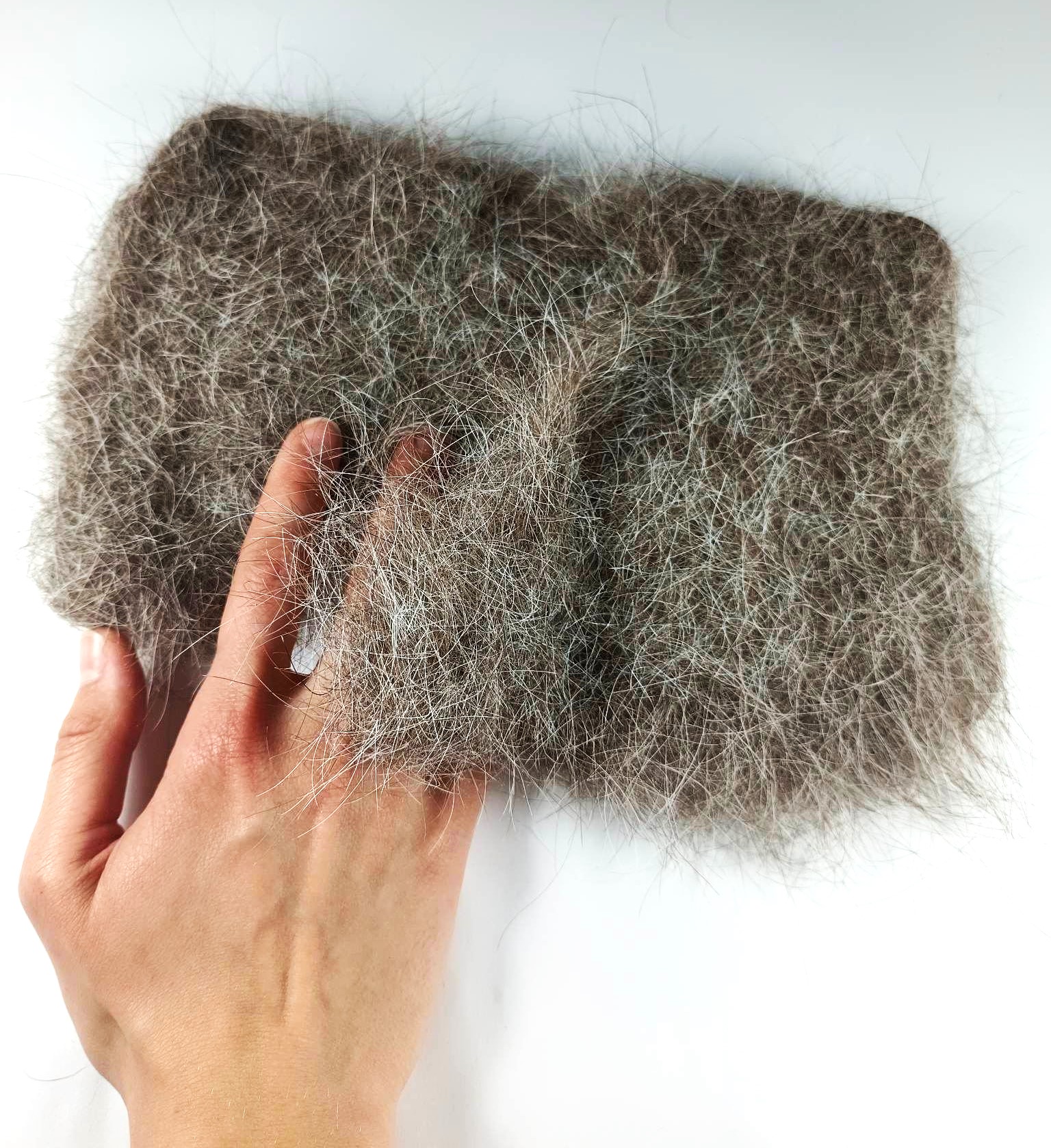
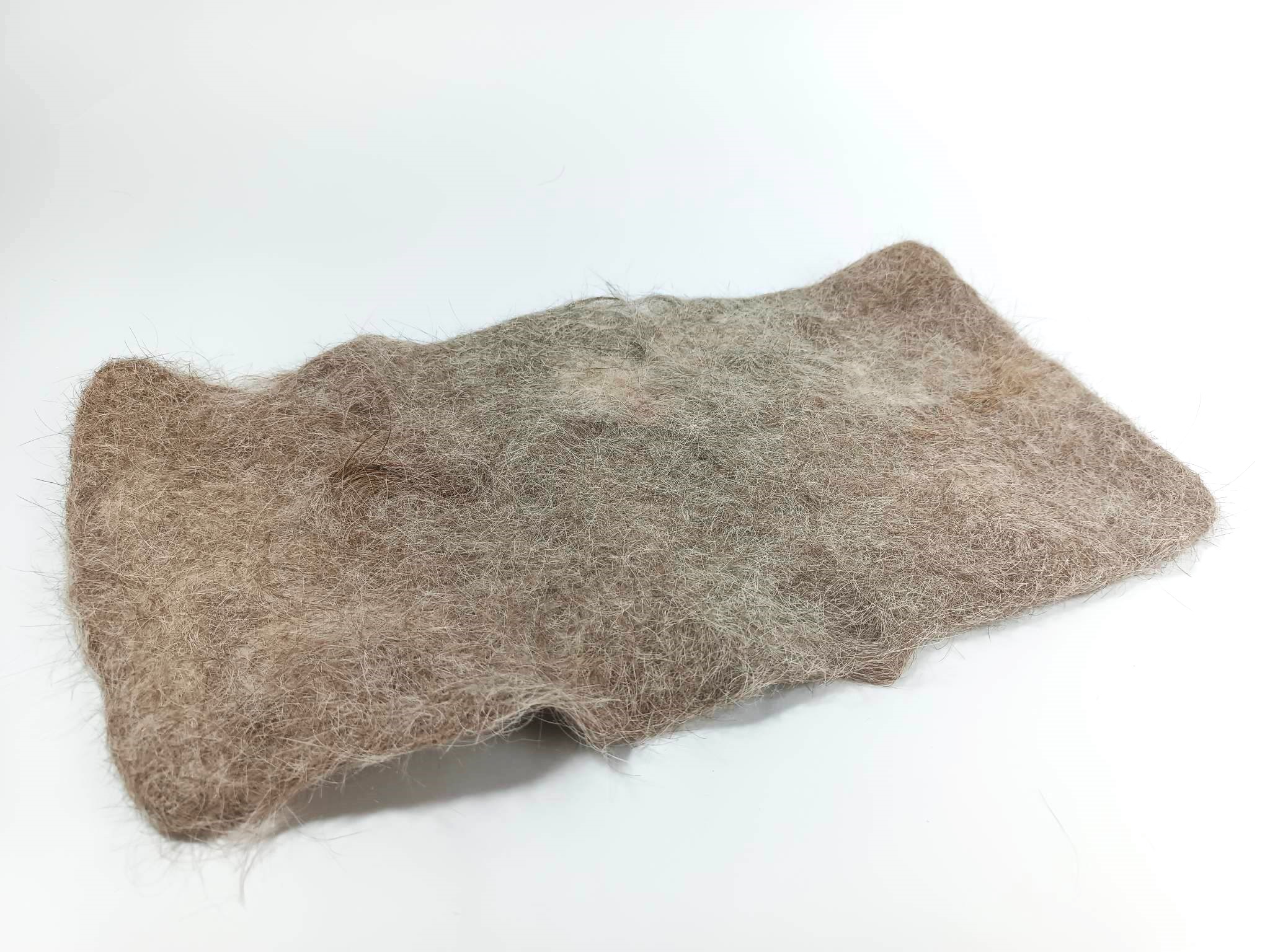
Storage¶
Week after week, you will collect dog hairs and human hair. Don't forget that you need to have some room to store it.
What happened in my case was that when collecting human hair, some of it were still humid, because it is washed before cut. So I stored it in an open cardboard, to allow it to dry with air. It avoids it to mold, even if hair is rot-proof, preserving them from mold is necessary.
Fibers preparation¶
Dog hairs¶
Before felting the fibers, you have to prepare them, by carding them.
What is carding ?
This step in the preparation of the fibers is important : it parallelise the fibers, and allows a better felting afterwards.
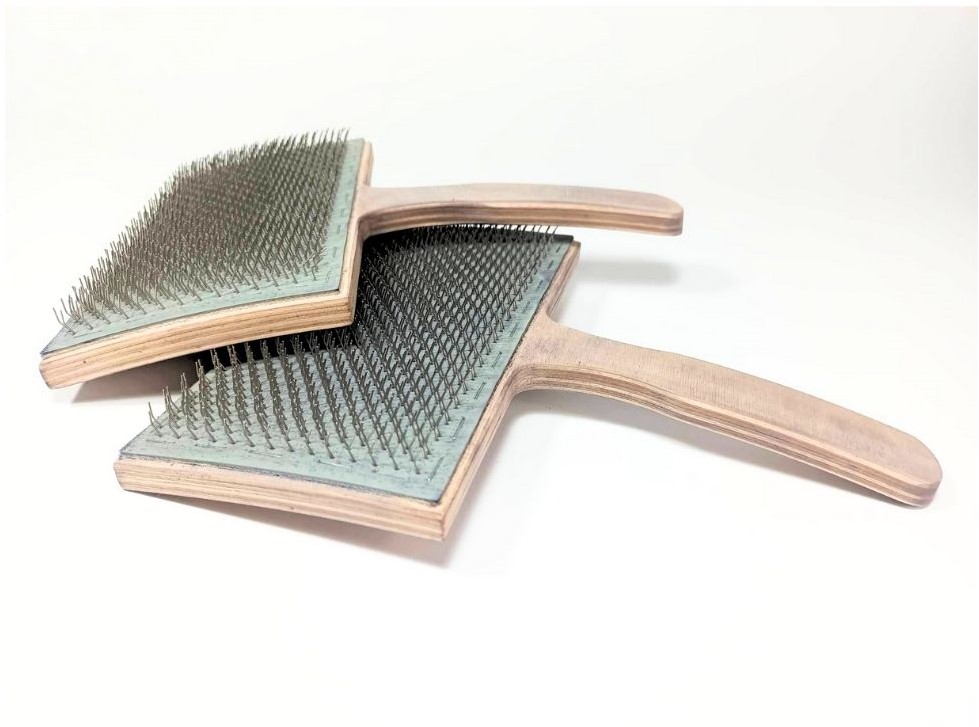
Here are hand brushes for the carding process.
Tooth Per Inch (TPI)
TPI is used in carding cloth's reference. There are several TPI possible when talking about carding cloth:
50 TPI
72 TPI
90 TPI
120 TPI
This number represents the number of teeth per inch of cloth, so the density the teeth are packed in. The higher the number, the finer the fibers become.
What to keep in mind is that choosing the right TPI also depends on the fibers you are using. 72 TPI carding cloth is the most accomodating, since it can be used with a wide range of fibers.
This site is very useful in term of understanding how TPI works.
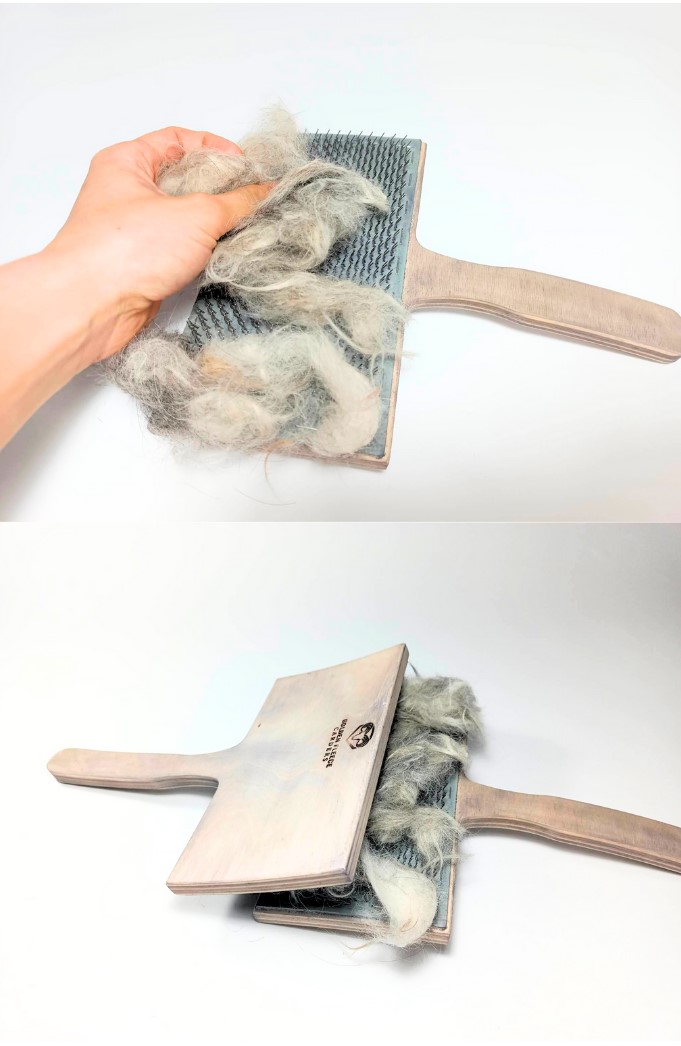
You can find several tutorials on how to card sheep or goat wool such as this one. It is efficient to understand how the carding brushes work, but it is slightly different with the dog hairs, since the fibers are much shorter. The result won't be the same as sheep wool, and it is normal !

Your results will more likely look like this one. You will end the process with little mats of carded fibers.
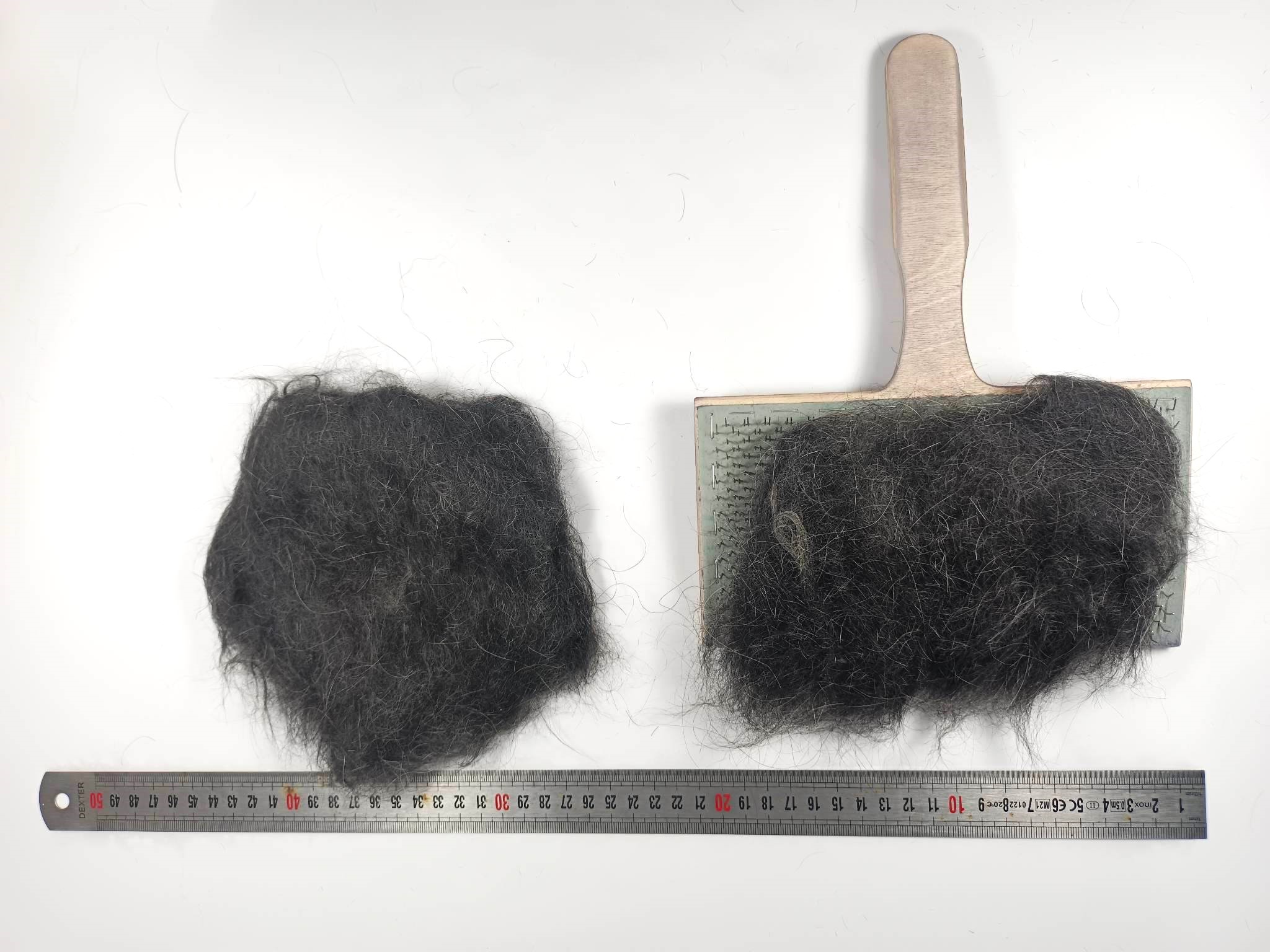
Here you can find the carding brushes. This is the most expensive tool you will need for these workshops.
Human hair¶
It more difficult to card human hair, because it is thicker, and most of the time, it is shorter.
Moreover, if you card hair, it becomes less shiny.
The presentation of the fibers is important, since some people are not used or are uneasy to touch other people's hair.
I decided to present the human hair by selecting strands of hair and placing them on a plate of textile, just like a painting. Here is the picture of it :
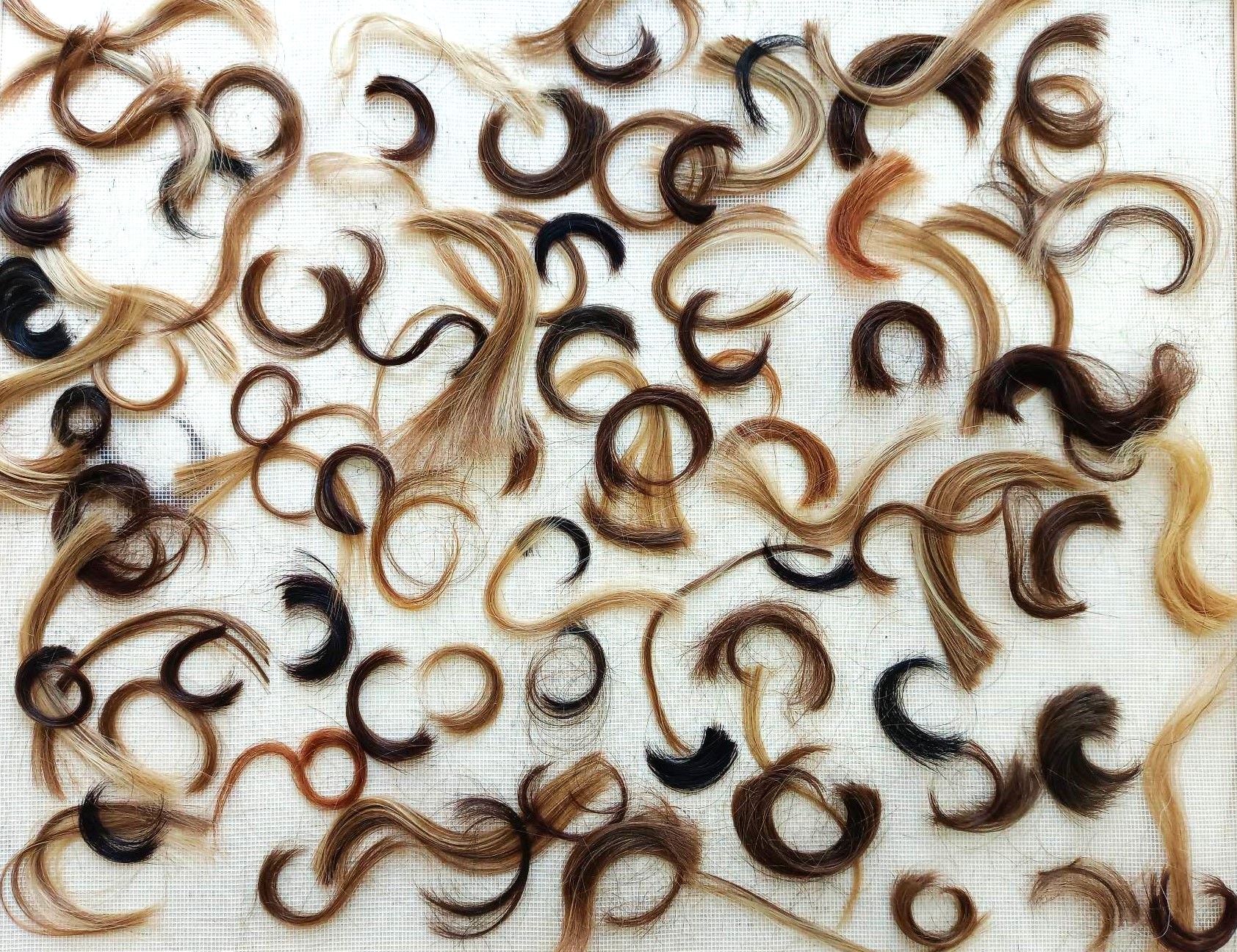
These strands can be used to create a pattern or different textures in the felt. Here is an example of a pattern created with hair strands in felted dog wool.

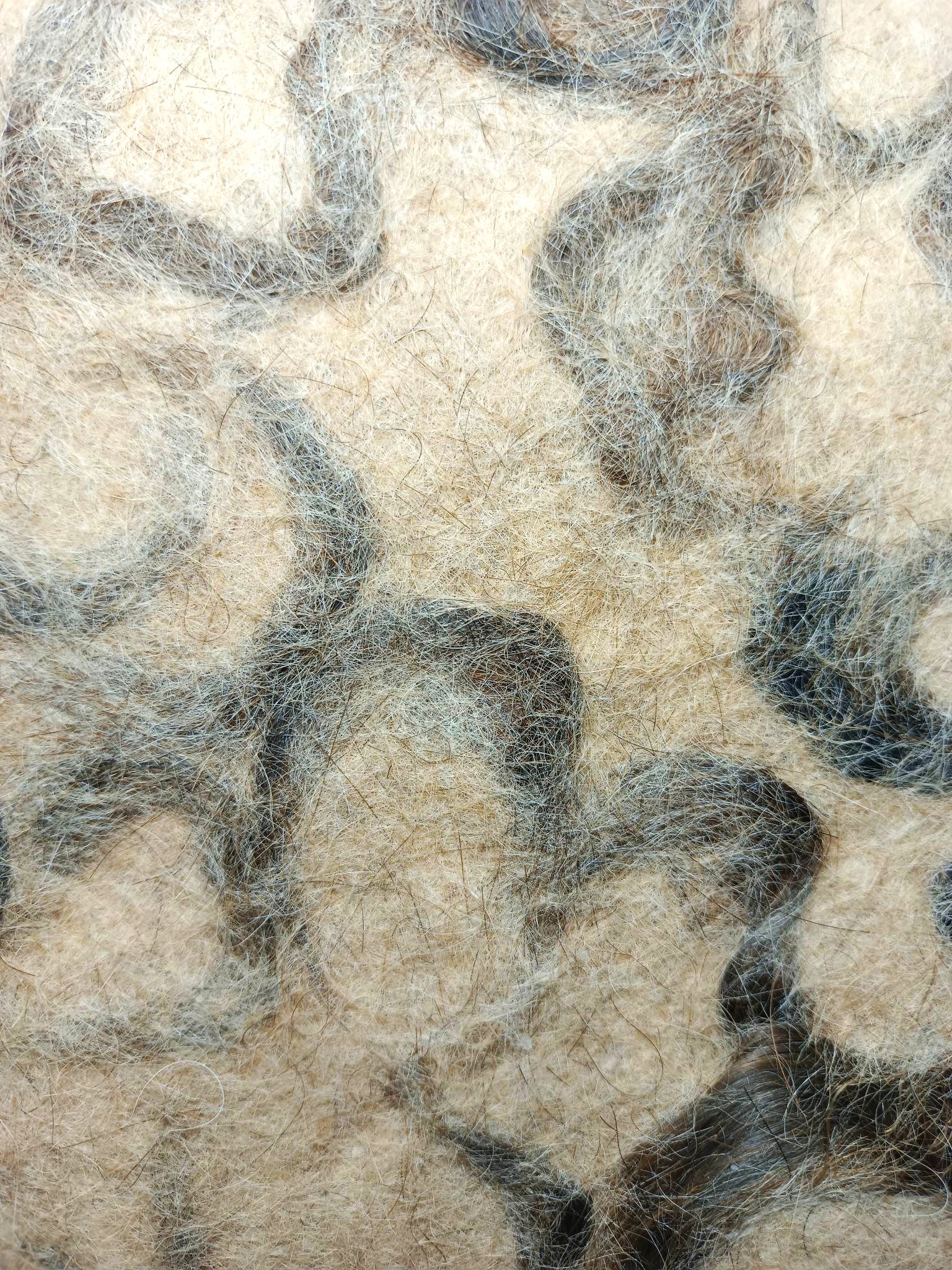
I also collected very long strands of hair (more than 20cm !), and I decided to keep them the way I got them, because carding them was damaging the fiber.